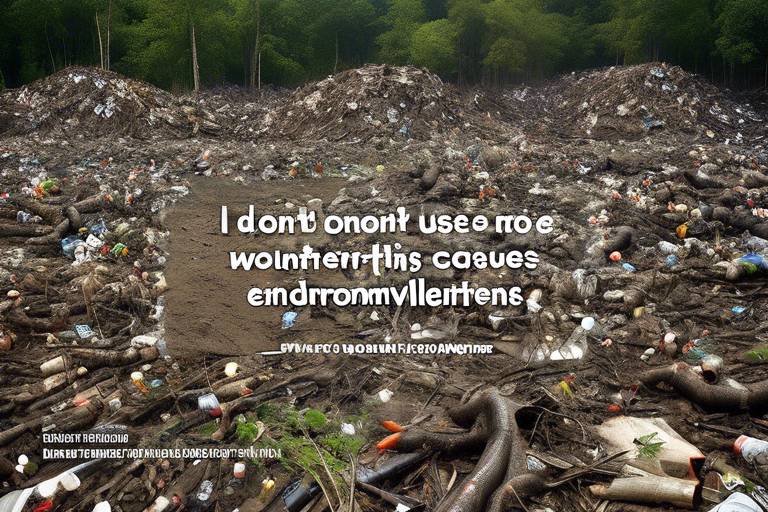10 Tips for Sustainable Clothing Care
When it comes to caring for your clothes sustainably, there are several tips and tricks you can follow to not only extend the life of your garments but also reduce your environmental impact. One of the simplest yet most effective ways to achieve this is by washing your clothes less frequently. By doing so, you can significantly reduce water and energy consumption, especially for items like jeans and sweaters that don't require frequent washing.
If you want to save energy and preserve the quality of your clothes, consider air drying them instead of using a dryer. Air drying not only helps to prevent shrinkage and fabric damage but also contributes to a longer lifespan for your garments.
Choosing eco-friendly detergents is another essential step towards sustainable clothing care. Opt for detergents that are biodegradable and free of harsh chemicals to minimize pollution and protect aquatic ecosystems. By making this switch, you can play a part in reducing the environmental impact of your laundry routine.
Instead of discarding clothes at the first sign of damage, why not consider mending and repairing them? By fixing small tears, replacing buttons, and repairing seams, you can prolong the life of your clothes and reduce the amount of textile waste generated.
Quality should always trump quantity when it comes to building a sustainable wardrobe. Investing in well-made, durable clothing may initially cost more, but it pays off in the long run as these items last longer and can withstand multiple washes without losing their shape or color.
Properly storing your clothes is key to maintaining their quality over time. Organize your wardrobe to prevent wrinkles and damage, and store seasonal items in a cool, dry place to ensure they remain in top condition when not in use.
Dry cleaning should be avoided whenever possible to minimize exposure to toxic chemicals and reduce environmental pollution. If you have dry-clean-only items, consider using eco-friendly dry cleaning alternatives or opt for spot cleaning methods to extend the time between full cleanings.
Donating or recycling unwanted clothes is a great way to give them a new life and prevent textile waste from ending up in landfills. Whether you donate to charity, sell, or recycle your old clothes, you contribute to a more sustainable fashion industry and help reduce the overall environmental impact of clothing production.

Wash Less Frequently
Learn how to care for your clothes sustainably with these practical tips that can help extend the life of your garments while reducing your environmental impact.
When it comes to sustainable clothing care, washing less frequently can make a significant impact. Not only does it reduce water and energy consumption, but it also helps preserve the quality of your clothes. Think about it, do your jeans really need to be washed after every wear? Probably not. Items like jeans and sweaters can go longer between washes without compromising hygiene or freshness.

Air Dry Your Clothes
When it comes to sustainable clothing care, one simple yet effective tip is to . By choosing to air dry your garments instead of using a dryer, you not only save energy but also help extend the lifespan of your clothing pieces. Dryers can be harsh on fabrics, causing shrinkage and potential damage over time. By allowing your clothes to air dry naturally, you can maintain their quality and shape for longer periods.
Imagine a gentle breeze carrying away excess moisture from your favorite shirt, leaving it fresh and ready to wear again. Air drying is like giving your clothes a breath of fresh air, allowing them to bask in the natural elements rather than being subjected to the heat and tumbling of a dryer.
If you're concerned about space or time, consider investing in a foldable drying rack or utilizing outdoor lines when weather permits. This small adjustment in your laundry routine can make a significant impact on both the environment and the longevity of your wardrobe.

Use Eco-Friendly Detergents
When it comes to sustainable clothing care, one essential aspect to consider is the use of eco-friendly detergents. These detergents play a crucial role in minimizing pollution and protecting aquatic ecosystems. By opting for environmentally friendly detergents that are biodegradable and free of harsh chemicals, you can significantly reduce your environmental impact while ensuring the longevity of your garments.
Traditional laundry detergents often contain harmful chemicals that can be detrimental to the environment, especially when they are washed down the drain. In contrast, eco-friendly detergents are formulated with natural ingredients that are gentle on fabrics and safe for the planet. These detergents break down more easily in the environment, reducing the risk of water pollution and harm to aquatic life.
Moreover, eco-friendly detergents are often produced using sustainable practices that prioritize environmental conservation. By choosing these detergents, you are supporting companies that are committed to reducing their carbon footprint and promoting a greener future for all. Additionally, many eco-friendly detergents come in recyclable packaging, further reducing waste and contributing to a circular economy.
When washing your clothes with eco-friendly detergents, you can rest assured that you are making a positive impact on the environment without compromising the cleanliness and freshness of your garments. These detergents are just as effective as their conventional counterparts, if not more so, proving that sustainability and cleanliness can go hand in hand.

Mend and Repair
In the world of sustainable clothing care, mending and repairing are like the superheroes swooping in to save the day. When a small tear appears in your favorite shirt or a button decides to make a run for it, don't toss the garment aside just yet. Instead, grab a needle and thread, or visit a local tailor, and give your clothes a second chance at life.
By embracing the art of mending and repairing, you not only extend the lifespan of your clothing but also reduce your contribution to the fast-fashion cycle. Imagine the satisfaction of seeing a once damaged piece restored to its former glory, ready to be worn with pride once again.
Think of it as giving your clothes a spa day - a little bit of TLC can work wonders. Whether it's fixing a small hole in your favorite pair of jeans or reattaching a loose button on a blouse, these simple acts of repair can have a significant impact on both the longevity of your wardrobe and the environment.
Moreover, repairing your clothes can be a creative endeavor, allowing you to personalize and customize your garments in unique ways. Adding decorative patches to cover a tear or replacing buttons with colorful alternatives can breathe new life into old pieces, making them even more special.
So, next time you spot a flaw in your clothing, don't despair. Instead, channel your inner handyman or woman and transform that flaw into a feature. Not only will you save money by avoiding frequent replacements, but you'll also contribute to a more sustainable fashion industry one stitch at a time.

Choose Quality Over Quantity
When it comes to building a sustainable wardrobe, one of the most important principles to follow is to . Investing in well-made, durable clothing may seem like a bigger upfront cost, but in the long run, it can save you money and reduce your environmental impact.
Think of it this way: Would you rather buy a cheap shirt that falls apart after a few washes, or invest in a high-quality shirt that lasts for years? By opting for quality pieces, you can reduce the frequency at which you need to replace your clothes, which ultimately leads to less textile waste and a more sustainable wardrobe.
When you choose quality over quantity, you're not just buying a piece of clothing; you're investing in a long-term relationship with your wardrobe. Quality garments are often made from better materials and constructed with greater attention to detail, making them more resistant to wear and tear.
Additionally, high-quality clothing tends to maintain its shape, color, and overall appearance better over time, meaning you can enjoy your favorite pieces for years to come without worrying about them losing their appeal.
By focusing on quality over quantity, you can also support brands that prioritize sustainable and ethical practices in their production processes. Many sustainable fashion brands place a strong emphasis on creating durable, long-lasting clothing that is designed to stand the test of time, both in terms of style and durability.
Ultimately, when you , you're making a conscious decision to invest in pieces that align with your values and contribute to a more sustainable fashion industry. So, next time you're tempted to buy multiple cheap items, consider the long-term benefits of investing in fewer, but higher-quality, pieces for a more sustainable wardrobe.

Store Clothes Properly
Properly storing your clothes is essential for maintaining their quality and extending their lifespan. When it comes to storing your garments, organization is key. Invest in quality hangers to prevent stretching and misshaping of clothes, especially delicate items like silk blouses or knitwear. Hanging clothes like suits and dresses can help maintain their shape and prevent wrinkles, while folding items like t-shirts and sweaters can save space and prevent creasing.
Additionally, consider using garment bags to protect your clothes from dust, moths, and other potential damage. These bags are particularly useful for storing special occasion or seasonal items that are not frequently worn. Be mindful of the storage conditions as well. Clothes should be stored in a cool, dry place away from direct sunlight to prevent fading and moisture damage.
For seasonal items that are not in use, consider vacuum-sealing them to save space and protect them from dust and pests. Labeling storage containers can also help you easily locate specific items when needed. By taking these simple steps to store your clothes properly, you can ensure that they remain in good condition for years to come.

Avoid Dry Cleaning
Avoiding dry cleaning can not only benefit your health but also help reduce environmental pollution. Traditional dry cleaning methods involve the use of harmful chemicals such as perchloroethylene, which can be hazardous to both humans and the environment. By minimizing your reliance on dry cleaning, you can make a positive impact on your well-being and the planet.
Instead of opting for dry-clean-only garments, consider choosing clothing that can be easily laundered at home. Many modern fabrics are designed to be machine washable, making it easier to care for your clothes without the need for dry cleaning. By selecting washable items, you can reduce the frequency of trips to the dry cleaner and lessen your exposure to toxic chemicals.
If you do have garments that require dry cleaning, look for eco-friendly dry cleaning alternatives in your area. Some cleaners use more sustainable methods such as wet cleaning or liquid carbon dioxide cleaning, which are gentler on fabrics and safer for the environment. These options can help you maintain your clothes without resorting to traditional dry cleaning practices.
Another way to avoid dry cleaning is by following proper garment care guidelines. By promptly addressing stains and spills at home, you can prevent the need for professional cleaning services. Simple actions like spot treating stains and airing out clothes can help you keep your garments fresh and clean without relying on dry cleaning methods.
Ultimately, by reducing your dependence on dry cleaning, you can contribute to a more sustainable approach to clothing care. Making conscious choices about how you clean and maintain your clothes can have a significant impact on both your personal well-being and the health of the planet.

Donate or Recycle Unwanted Clothes
Learn how to care for your clothes sustainably with these practical tips that can help extend the life of your garments while reducing your environmental impact.
When it comes to dealing with clothes you no longer need, there are eco-friendly options that can benefit both the environment and those in need. Donating your unwanted clothes to charity organizations not only reduces textile waste but also provides clothing for individuals who may not have the means to purchase new items. Additionally, selling your gently used clothes can give them a second life and help you earn some extra cash. Recycling textiles is another sustainable option, as it prevents old clothes from ending up in landfills where they can contribute to environmental pollution. By choosing to donate or recycle your unwanted clothes, you contribute to a circular economy where resources are reused and waste is minimized.
Q: Can I donate clothes that are damaged or worn out?
A: While donating clothes in good condition is preferred, some organizations accept damaged or worn-out items for recycling purposes. It's best to check with the specific charity or recycling facility for their guidelines.
Q: How can I find local donation centers or recycling facilities for clothes?
A: You can search online for local charities, thrift stores, or recycling centers that accept clothing donations. Many communities also have clothing donation bins located in public areas for convenient drop-offs.
Q: What are the benefits of recycling clothes?
A: Recycling clothes helps reduce the amount of textile waste that ends up in landfills, conserves resources by repurposing materials, and reduces the environmental impact of producing new clothing. It also supports the development of a more sustainable fashion industry.
Frequently Asked Questions
- How often should I wash my clothes?
You should wash your clothes only when necessary to conserve water and energy, especially for items like jeans and sweaters that don't require frequent washing.
- Why is air drying clothes better than using a dryer?
Air drying clothes helps save energy, extends the lifespan of fabrics, and reduces the risk of shrinkage and damage that can occur with dryer use.
- What are eco-friendly detergents, and why should I use them?
Eco-friendly detergents are biodegradable and free of harsh chemicals, making them safer for the environment and aquatic ecosystems compared to traditional detergents.
- How can I extend the life of my clothes?
You can extend the life of your clothes by regularly mending small tears, replacing buttons, and repairing seams instead of discarding garments at the first sign of damage.
- Why is choosing quality over quantity important in sustainable clothing care?
Investing in well-made, durable clothing reduces the need for frequent replacements, leading to less waste and a longer lifespan for your wardrobe.
- What is the best way to store clothes to maintain their quality?
Organize your wardrobe to prevent wrinkles and damage, and store seasonal items in a cool, dry place to preserve their quality over time.
- Why should I avoid dry cleaning when caring for my clothes?
Avoiding dry cleaning helps minimize exposure to toxic chemicals and reduces environmental pollution, promoting a more sustainable approach to clothing care.
- What should I do with unwanted clothes?
You can donate old clothes to charity, sell them, or recycle them to give them a new life and prevent textile waste from ending up in landfills.



















